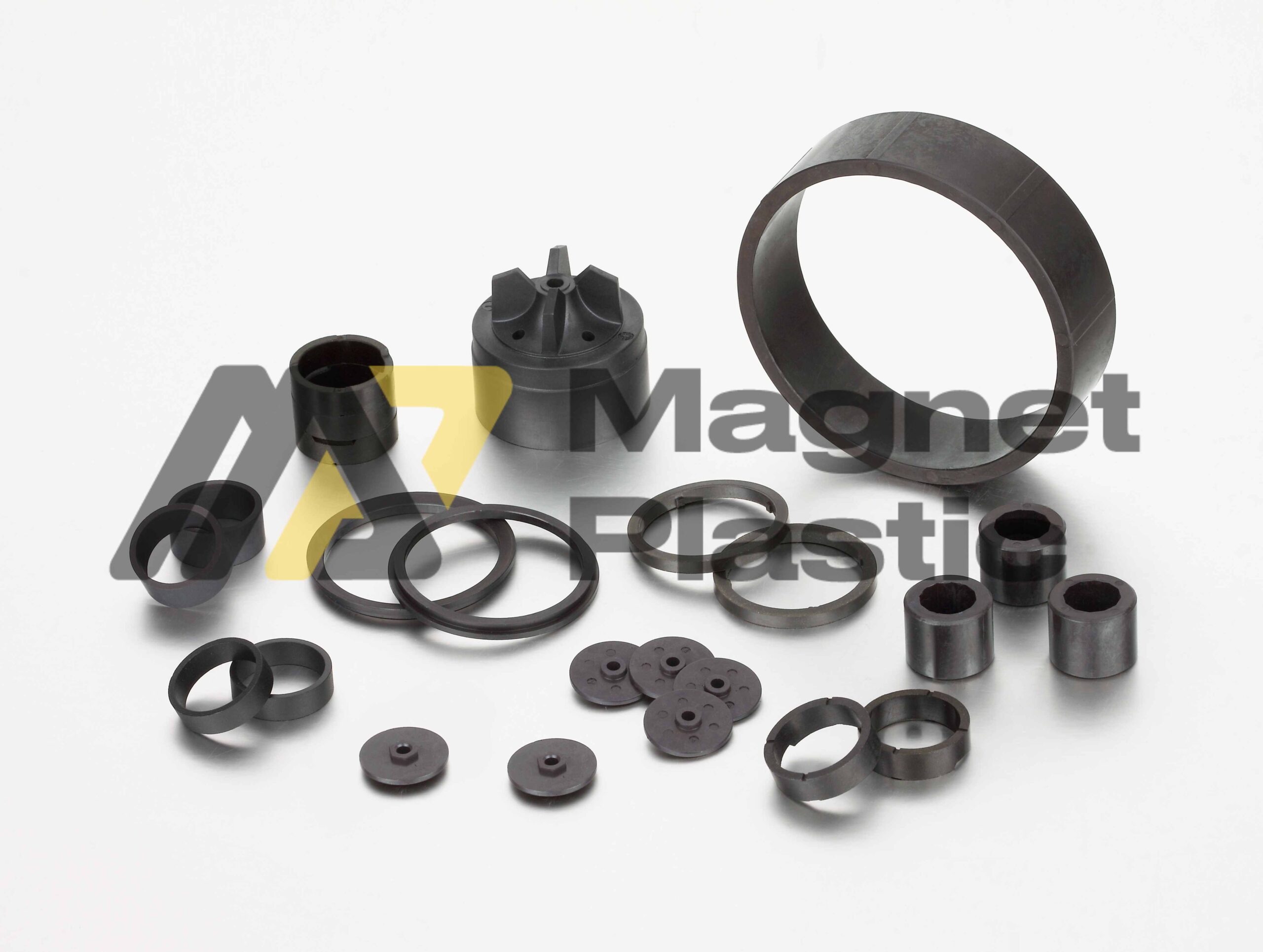Differences Between Synthetic Magnets and Injected Magnets
Magnets play an essential role in modern technology, from electric motors and electronic devices to advanced industrial applications. There are a variety of magnet types, but two of the most common in industry are sintered magnets and die-cast magnets. While both serve similar functions, their manufacturing methods and physical properties make them more suitable for different applications. In this article, we explore the key differences between these two types of magnets and how to choose the best one for your needs.
What are sintered magnets?
Sintered magnets are those made by a process of compacting and sintering metal powder. This method involves compressing the powder under high pressure to form a solid piece, which is then heated to very high temperatures so that the particles fuse together. This process creates dense and very powerful magnets, such as neodymium (NdFeB) magnets, known for their ability to generate extremely strong magnetic fields.
Advantages of Sintered Magnets:
Higher Magnetic Density and Strength: Sintered magnets are the most powerful in terms of magnetic energy density, making them an ideal choice for applications requiring high magnetic strength, such as high-performance motors, generators, and levitation systems.
High Temperature Resistance: Sintered magnets, especially samarium cobalt (SmCo) magnets, can maintain their magnetism even at very high temperatures, making them suitable for extreme environments.
Durability and Longevity: These magnets are resistant to wear and loss of their magnetism over time, making them a long-lasting choice for heavy industrial applications.
What are Injected Magnets?
Injected magnets, also known as bonded or compression magnets, are made by mixing magnetic powder with a binder material, such as plastic resins. This mixture is injected into a mold to create custom-shaped magnets. The injection process allows for the creation of more complex shapes that are impossible to achieve with sintered magnets.
Advantages of injected magnets:
Flexibility in design: Unlike sintered magnets, injected magnets allow for greater freedom in geometric shapes, allowing for the creation of magnets with complex and precise designs, which is useful in electronics and automotive.
Lower fragility: Injected magnets are typically more resistant to shock and fracture due to their composition, allowing them to withstand rougher handling.
Lower cost: Compared to sintered magnets, injected magnets are generally cheaper to manufacture, especially in high volumes.
Key differences between sintered and injected magnets
Magnetic power: Sintered magnets are significantly more powerful than injected magnets, making them preferable for applications requiring high magnetic energy density.
Manufacturing Process: While sintered magnets are made by compacting and sintering metal powder, injected magnets are injection molded, allowing for greater flexibility in shapes.
Applications: Sintered magnets are best suited for high-performance applications such as electric motors, generators, and high-precision devices, while injected magnets are preferred in electronics, sensors, and devices that require complex shapes or higher impact resistance.
High Temperature Resistance: Sintered magnets have better resistance to high temperatures, while injected magnets may lose magnetic strength if exposed to extreme conditions.
Conclusion
Choosing between sintered and injected magnets depends on the type of application and conditions of use. If you need high magnetic strength and resistance to high temperatures, sintered magnets are the best choice. On the other hand, if your application requires complex shapes, impact resistance, or a lower cost, injected magnets offer a versatile and economical solution.
